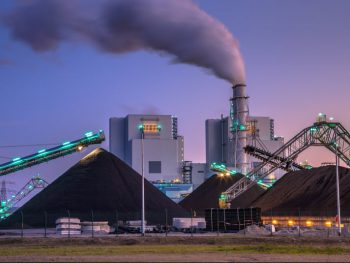Addressing uncertainty in water management
Most of the SDGs are in some way affected, either directly or indirectly, by growing water scarcity problems, which are likely to be further exacerbated by factors like climate change and increased water extractions for use in, for instance, agriculture and industry. IIASA researchers analyzed the wide range of possible future conditions that could pose planning challenges for water management authorities in vulnerable regions and river basins. They identified changes in the uncertainty range of anticipated water scarcity conditions and based on this assessment, developed a general decision-making framework to support the design of policy options, which, for the first time, explicitly takes into account the associated uncertainties [1].
Options to address water scarcity include investments in water storage and transfer infrastructure, desalination plants, more efficient irrigation systems, improved crop water productivities, as well as water trade and economic incentives. As most of these solutions come at a substantial cost, it is crucial that decisions on investments and interventions for water management at all scales are based on reliable projections of future water shortages. The reliability of such projections are however subject to uncertainties related to the wide range of anticipated socioeconomic developments, climate change conditions, and methods that will apply in the future. In addition, water-sector challenges may vary considerably between countries and regions facing different levels of water scarcity under future uncertainty.
Previous assessments of future water scarcity and associated adaptation and management options were wholly based on either single models or multi-model averages. The new framework developed at IIASA, accounts for the large range of uncertainty, based on a set of 45 water scarcity projections representing different socioeconomic pathways, climate change conditions, and modeling approaches. The researchers also provided guidelines at grid-scale, thereby going beyond the commonly used country- or basin-scales.
To help understand the potential policy implications of their findings and guide the planning for large-scale adaptation strategies in coming decades, the team defined four clusters (or challenge classes), highlighting areas with potentially similar water management challenges in each. While acknowledging that water management is constrained by local conditions and that there might be few global solutions to local water management problems, they note that policies should be designed to be robust under a wide range of socioeconomic and climate conditions, but also able to adapt to conditions that both can and cannot be anticipated.
The study makes a critical contribution to future processes related to the planning and implementation of no-regret, transitional, and transformational investment options by governments, the private sector, and civil society actors. This makes the framework especially suitable for use by regional to national to multinational water authorities and water managers, as well as socioeconomic stakeholders and decision makers.
References
[1] Greve P, Kahil T, Mochizuki J, Schinko T, Satoh Y, Burek P, Fischer G, Tramberend S, Burtscher R, Langan S, Wada Y (2018). Global assessment of water challenges under uncertainty in water scarcity projections. Nature Sustainability 1: 486-494.
Further information
Related research





